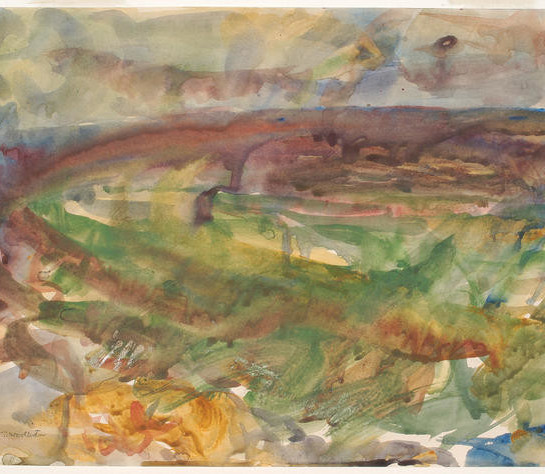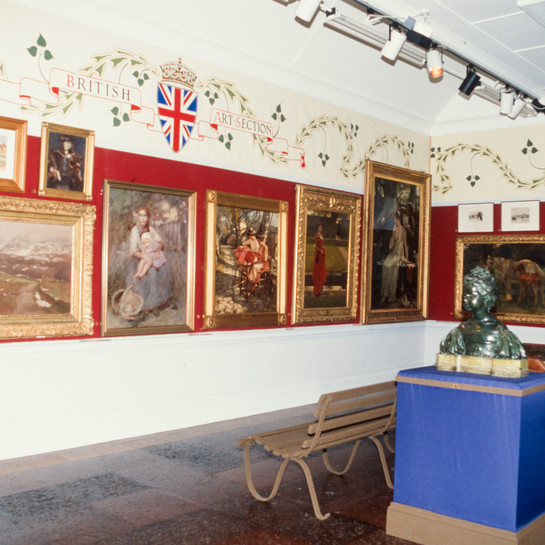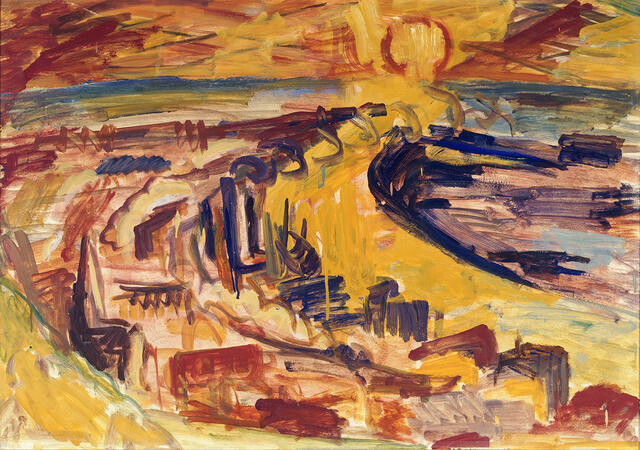Toss Woollaston
Aotearoa New Zealand, b.1910, d.1998
Sunset, Grey River
- 1955
- Oil on cardboard
- Purchased, 1956
- 565 x 825mm
- 69/130
- View on google maps
Tags: Expressionist (style), landscapes (representations), natural landscapes, rivers, sunlight, yellow (color)
Toss Woollaston moved to Greymouth on the West Coast from Mapua in Nelson in 1949, to become a door-to-door salesman of ointments and household products – a ‘Rawleigh’s Man’. It took him many months to come to terms with the new landscape, while he painted at night and on weekends. ‘Greymouth, in from the river, looks a crowd of grey churches and buildings at all angles, with high green and bushy hills just as sharp and angular rising behind – not mine yet,’ he wrote to his wife Edith, not long after arriving.The West Coast landscape became his the following year, when he completed what he considered his first successful painting from his house on the hill in Greymouth. The new environment invigorated his work. His brushwork became looser and more expressionistic, while he described his approach to the landscape of the Coast as ‘a great violence in subdued colours’. Sunset, Grey River is an unusual elevated view of downtown Greymouth, then a bustling coal port. The setting sun floods the town and river with golden light. Masts of boats and the piers of the town bridge are depicted in rough silhouette, produced in a storm of brush strokes.‘For most of my life,’ Woollaston wrote five years later, in 1960, ‘I have known a desire to take some action to harvest the rich emotions that have come to me from landscape.’
(March 2018)
Exhibition History
Brought to light, November 2009- 22 February 2011
By the 1950s Toss Woollaston had established his reputation in New Zealand as a leading modernist painter. He worked quickly and spontaneously in a gestural manner that infused his works with much immediacy and energy As a pioneering modernist working in mid-twentieth-century New Zealand, Woollaston faced many challenges. It was with difficulty that he managed to continue painting while supporting his family, and it was not until the late 1960s that he was able to commit himself fully to his art. He moved to Greymouth in 1949 and the West Coast landscape is the subject of some of his most vigorous artistic treatments. Portraiture was also an important element in Woollaston’s output and something that he pursued throughout his career. Of his approach to portrait painting he commented: 'I have to observe (the subject), sometimes for quite a long time, till I find their most natural attitudes and movements. I do not copy their actual physical movements...but I have a rich means of suggesting them - the lean and tilt of the different planes and volumes in contrasting directions - what I understood by Hans Hofmann’s term movement and tension on the picture planes...'



